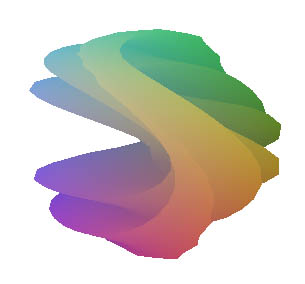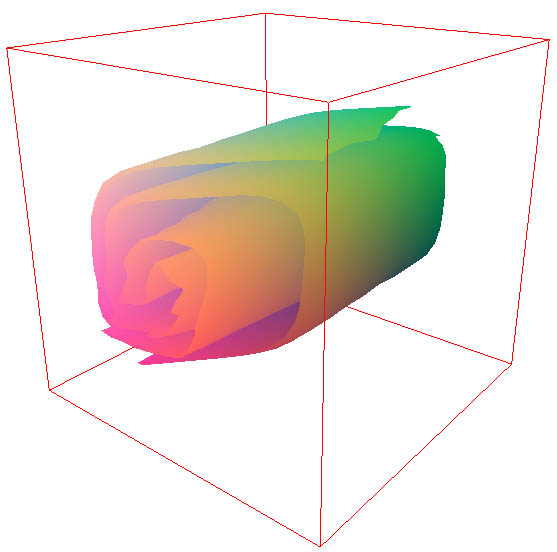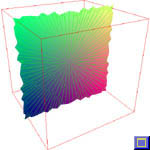 |
||
 |
The
second program: Differential Manifold The second program draws surfaces that can be represented by differential equations. These surfaces are of two types: stable and unstable manifolds. Stable manifolds are found in the forward time direction, whereas unstable manifolds are found the in the reverse time direction. This program is still under development. |
|
| How
are the two programs different? Although there is a large overlap of code for the two programs, there are two key differences between the programs. The first is the surfaces each program draws. There are many interesting surfaces that can be described by differential equations, but cannot be described by an implicit, closed form equation. Examples of such surfaces are depicted to the right and above. |
 |
|
 |
The second key difference is the method by which each program constructs the geometry of the surface. The first program divides the space into small regions and then analyzes each region separately. Such a technique cannot be applied to differential manifolds. Instead, the second program starts from the fixed point of the vector field defined by the differential equations and explores systematically various solutions to the equations. It then integrates the information it acquires from this exploration to interpolate the actual surface. In the image to the left, the green lines represent the solutions that the program explored. | |
| How
are these programs useful? |
||
| Written and designed by Adam Barth. February 17, 2000 | ||